-
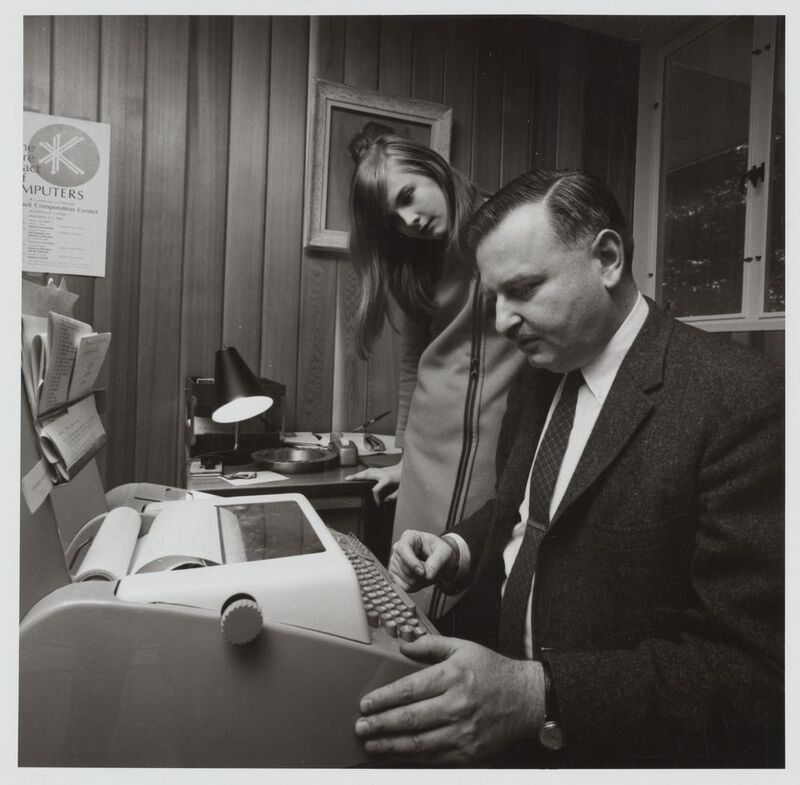
In January of 1970 the Trustees elected John Kemeny to the President of the College. Kemeny was an outspoken proponent of coeducation, so with his election the Trustees signaled their willingness to at least explore admitting women to Dartmouth.
-
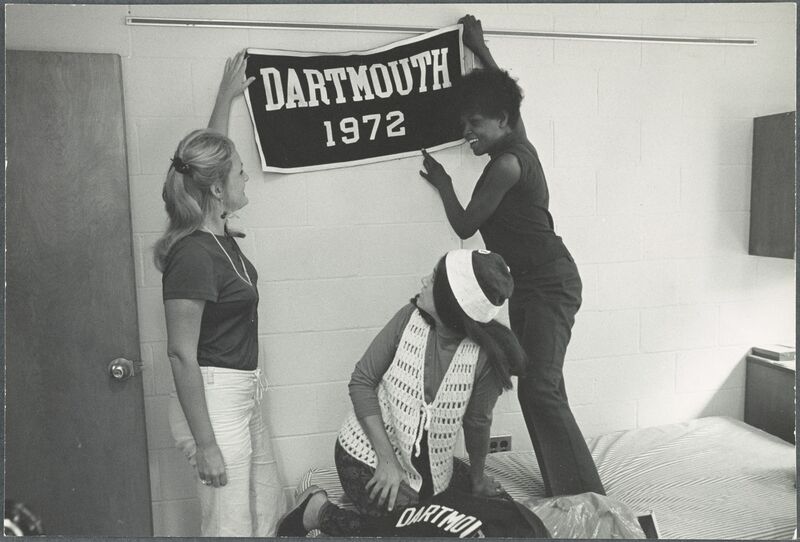
Three women exchange students who arrived on campus during the 1969-70 school year. From left to right: Gayle Williamson (Randolph-Macon College), Elizabeth Heaps (Connecticut College), Dr. Mary Frances Stubbs (Talladega College).
-
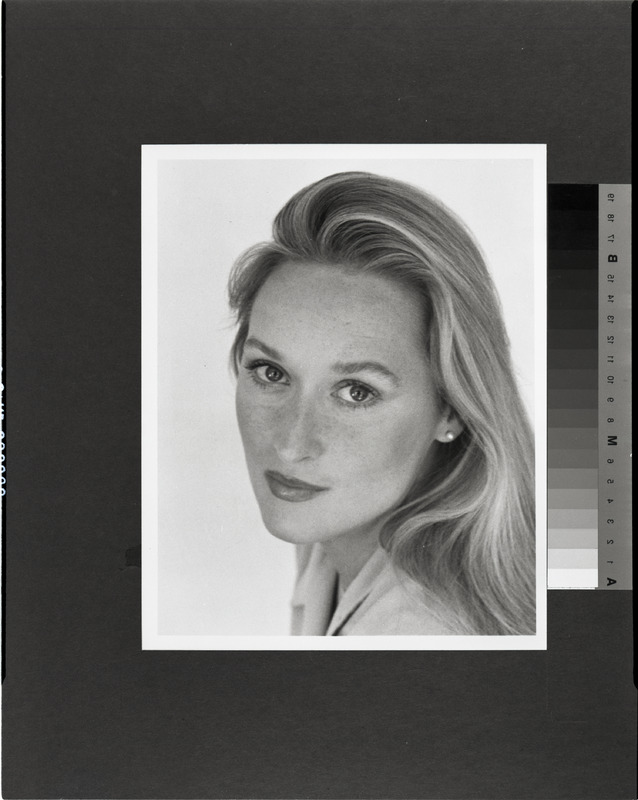
Under pressure from the students, the administration agreed to admit 70 women as part of the 10 College Exchange Notable among these early attendees was Meryl Streep.
-
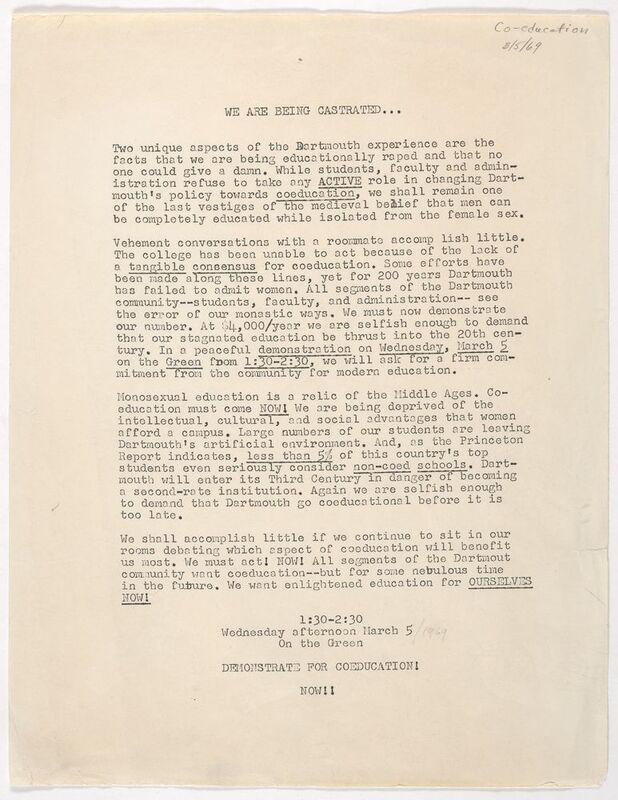
In keeping with the anti-establishment spirit of the 1960s some students even organized protests on The Green.
-
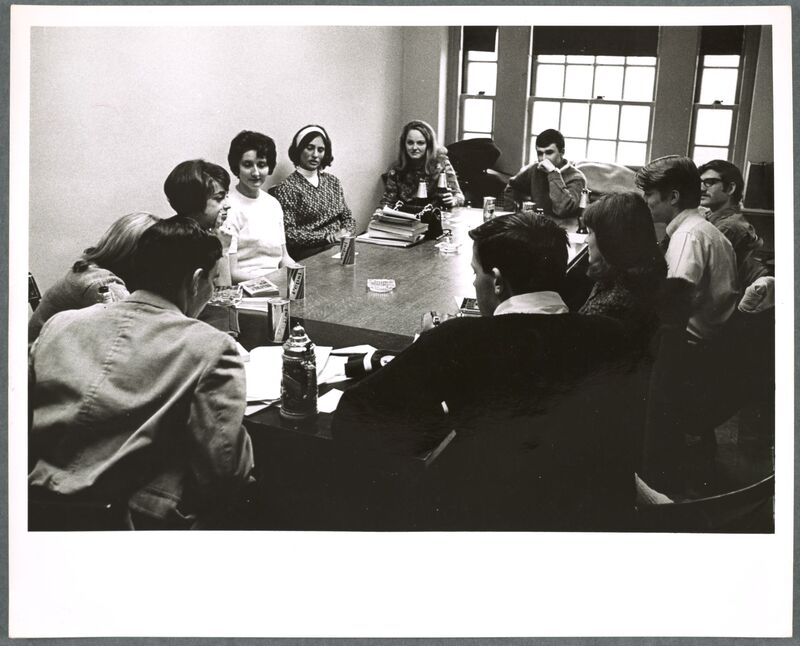
Students holding a discussion during Great Day
-
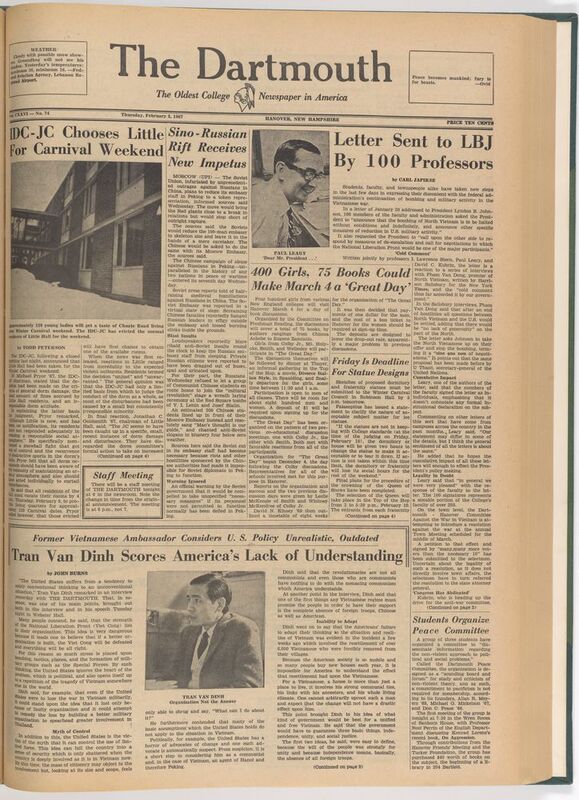
One of the earliest acts by the students to push coeducation was The Great Day. The Great Day invited 400 women from other institutions, mostly the Seven Sisters (which included schools like Smith, Mount Holyoke, Vassar and Wellesley), to come to Dartmouth to participate in a day of coed book discussions. It was a kind of dry run for what it would be like to have women on campus and in the classroom. That same year the students established the Ad Hoc Committee on Coeducation a joint student/faculty committee to study coeducation at Dartmouth.
-
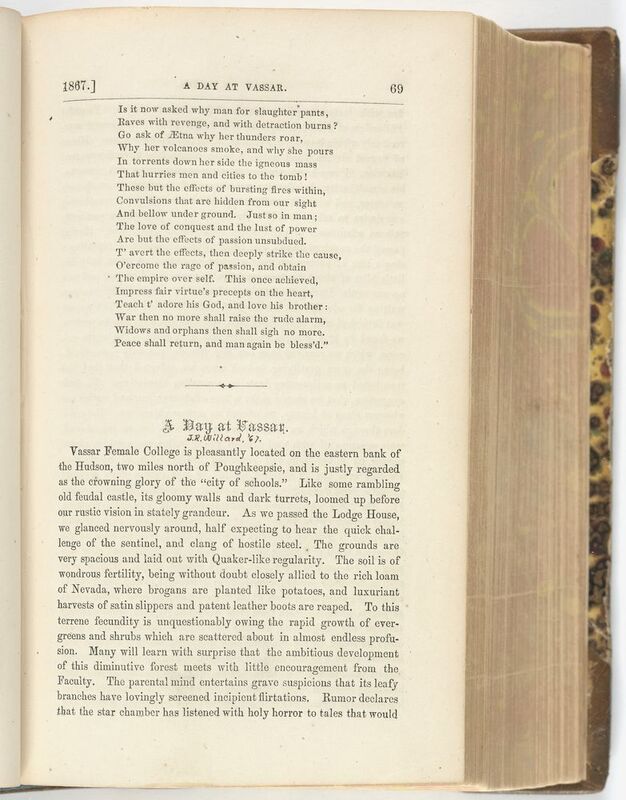
In 1867 The Dartmouth published an article about a visit to Vassar, which at the time was a college for women. They closed their article with the expectation that women would soon grace the halls of Dartmouth, but they were a bit premature since it would be over 100 years before women would matriculate at Dartmouth.







